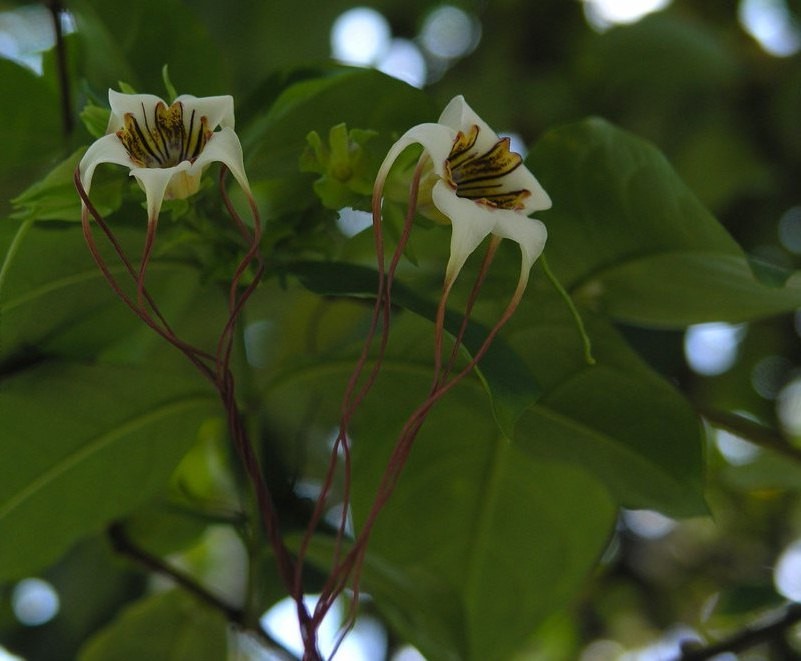"hispid strophanthus "
(Strophanthus hispidus)

Description
Strophanthus hispidus, the hispid strophanthus, (family: Apocynaceae) is a liana or shrub that can grow up to 5 metres (16 ft) tall. Its flowers feature a yellow corolla and yellow corona lobes spotted with red, purple or brown.The seeds, like those of several other Strophanthus species, contain potent cardiac glycosides (notably strophanthin) absorbable through wounds - hence its use in African arrow poisons and later in modern medicine as a digitalis-like heart stimulant.Strophanthus hispidus is native from west tropical Africa east to Tanzania and south to Angola. It is naturalized in China. The plant was observed for the first time in Senegambia by a certain monsieur Houdelot, then in Sierra Leone between 1771 and 1775 by Henry Smeathman, likewise in Nigeria (in use among the Nupe) by William Balfour Baikie, in Gabon by Marie-Théophile Griffon du Bellay and in West Tropical Africa by Gustav Mann. Strophanthus is a genus of flowering plants in the family Apocynaceae, first described as a genus in 1802. It is native primarily to tropical Africa, extending to South Africa, with a few species in Asia from southern India to New Guinea and southern China. The genus name is a compound of the Greek words στροφος (strophos) "twisted" and ανθοσ (anthos) "flower", in reference to the corolla lobes which, in some species - notably S. petersianus (see below) - resemble long twisted ribbons or threads and can reach a length of 30–35 cm. This trait, in addition to colouring involving combinations of bright pinks, purples and oranges, combine to make the flowers among the most ornamental in the plant kingdom. The genus includes vines, shrubs, and small trees. The leaves are opposite or whorled, simple broad lanceolate, 2–20 cm long, with an entire margin. Several African tribes used Strophanthus as the principal ingredient in arrow poison. After dipping the arrows of their hunting weapons into a strong concentration of the ingredient, the effect was to stun their prey. Plants from this genus produce toxic alkaloids and cardiac glycosides g-strophanthin (syn. ouabain), k-strophanthin, and e-strophanthin. As ordinarily administered, the drug acts on the heart before influencing any other organ or tissue. Indeed, often no other effect may be observed.
Taxonomic tree:







